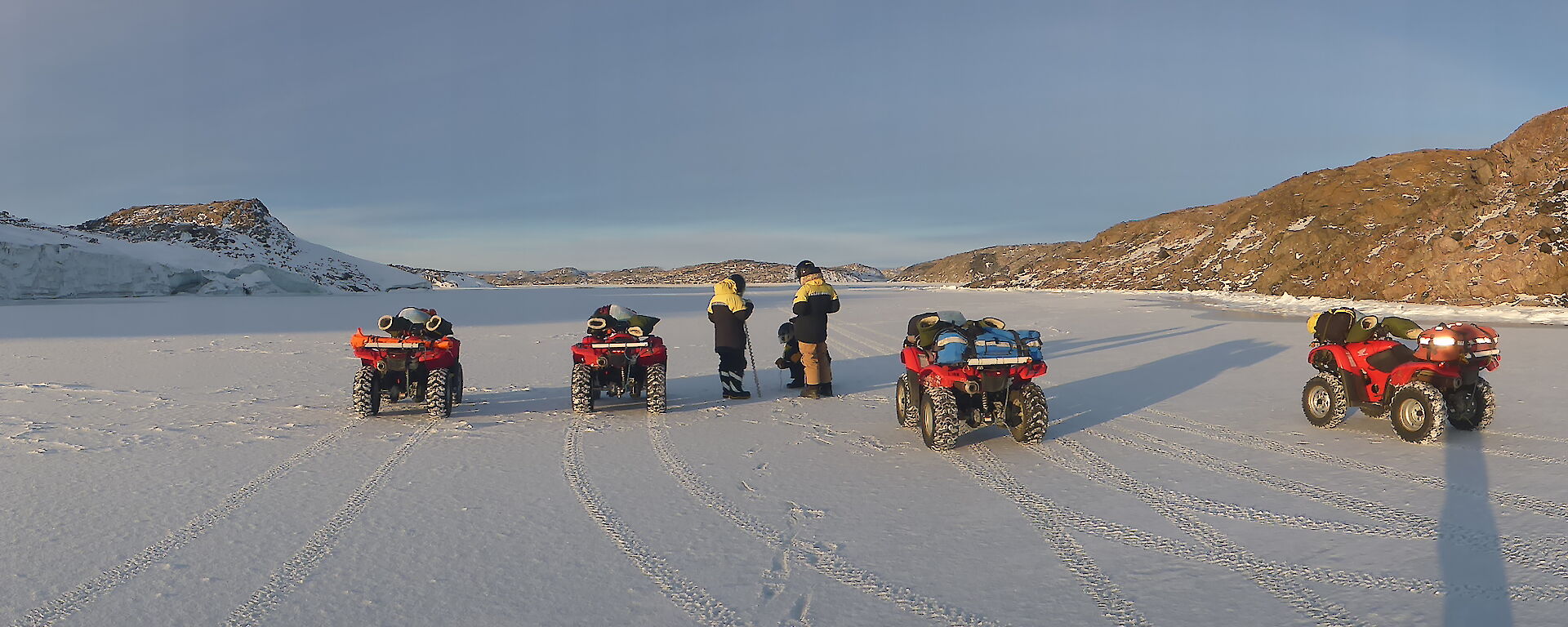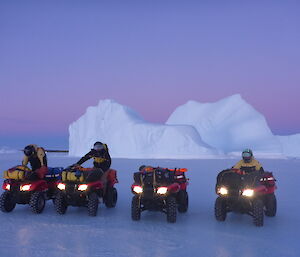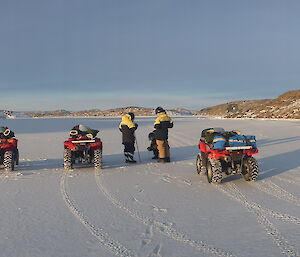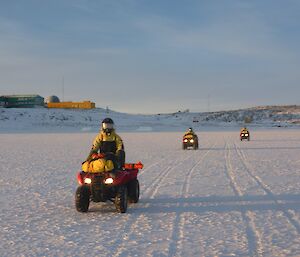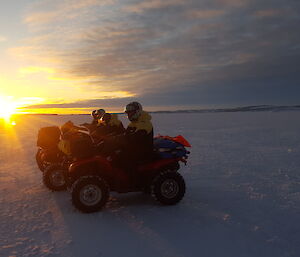This week at Davis we watched our last bit of direct sunlight disappear over the horizon, never to be seen again!
…for 6 weeks or so.
I’ve watched a lot of pretty spectacular sunrises and sunsets all over the place, but watching the sun come up in the afternoon (only halfway over the horizon, mind you) is definitely one of the more unique experiences out there!
This final setting of the sun also marked another significant milestone for Davis expeditioners — the completion of Field Training on quad bikes. This training is the next step after initial survival training, and equips expeditioners with the required skills and knowledge to be able to operate safely in a field environment, often away from station for days at a time.
With no direct access to the plateau from station, Davis expeditioners have been confined to walking trips for the last few months until the sea ice formed again and was assessed as being of the required quality and thickness to support vehicle travel.
With some excellent early results from initial sea ice testing, and some pretty fortunate weather, I’ve spent the last month clocking up close to 500kms on a quad bike, rotating the Davis population through training blocks in small groups and venturing into various parts of our operating area. This has the added bonus of spreading local area knowledge and familiarity amongst the team.
Training content is quite varied, and includes topics such as developing rider skills and confidence on quad bikes; the intricacies of navigating around a seemingly impenetrable wall of icebergs; use of a range of contingency/emergency equipment; field hut equipment and procedures; assessing route conditions and potential hazards that may be encountered…oh, and maybe getting a quick look at a few points of interest that are worth coming back to on recreational weekend trips.
While everyone is keen to get out and explore the area, it’s not all about recreation — a big part of getting everyone up-skilled for field travel is to effectively support the multitude of work-related tasks that will occur over the coming months, ranging from hut maintenance, winter science support (several projects require us to check remote monitoring equipment and retrieve data for the scientists back home), and the retrieval-servicing-return of some heavy machinery from Woop Woop (our summer runway, located up on the plateau, about 40km from station) — so that it’s all ready to go by the time our first aircraft arrives to mark the start of Summer Operations in November.

